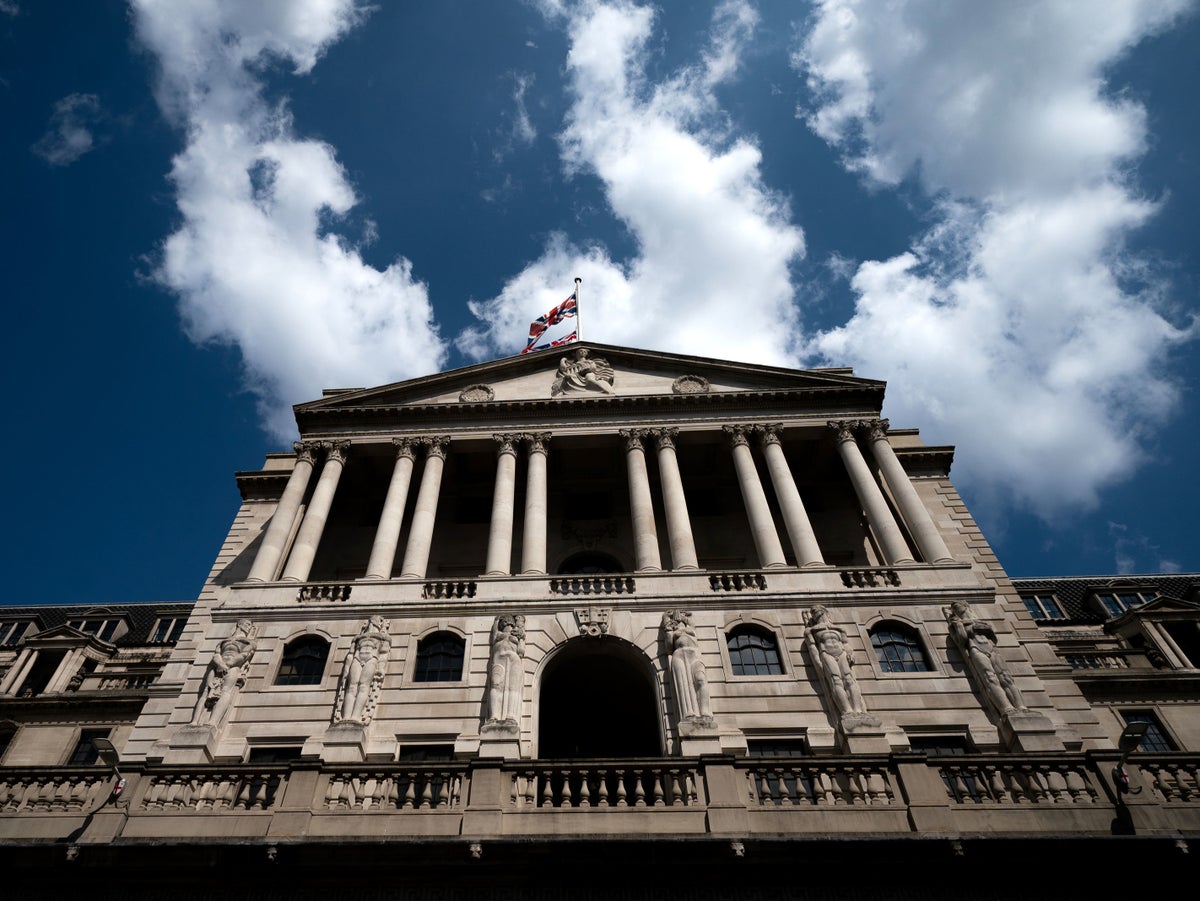
The Bank of England has pushed rates to a new 15-year peak of 5.25 per cent as it seeks to tame stubbornly high inflation, causing further pain for mortgage-holders and businesses with loans.
While last month’s improved inflation figures have buoyed hopes that the cycle of rate rises could peak by the year’s end at around 5.5 per cent, some economists now fear it may be as long as 2025 before the central bank’s rates start to fall again.
Speaking ahead of what would be the Bank’s 14th consecutive rise, Laith Khalaf of investment firm AJ Bell told The Independent: “Obviously the lion’s share of rate rises are in the rearview mirror, and we’re getting close to the top of the interest rate cycle.”
But the prospect of any decrease in rates is still “in the long grass”, he warned.
“I think the next thing the market is looking for is just for them to stop raising interest rates and find a bit of an equilibrium, and barring some economic shock, I think they will want to keep rates high for some time just to see how they work through the economy, said Mr Khalaf. “I think the mortgage rates are going to stay at much more elevated levels than we’ve been used to, probably indefinitely. There’s a lot of pain to swallow there.”
“Big four” accounting giant KPMG told The Independent that it may take two years until rates start to fall again – with the Bank of England itself now forecasting its base rate will hit 6 per cent in the third quarter of 2024, and remain at 5.2 over the same period in 2025.
“If inflation eases in line with our expectations, which are broadly similar to the Bank’s, we could see the BoE beginning to cut rates very gradually by mid 2025, depending on the strength of the economy,” said Yael Selfin, chief economist at KPMG, in emailed remarks.
Paul Dales, chief UK economist at Capital Economics, also believes that, “whatever the peak”, Threadneedle Street will not start to cut rates for around a year, in order to convince itself that “it has done the job” of returning wage growth to levels more consistent with its 2 per cent inflation target.
The bank “is unlikely to turn around quickly, even if the economy falls into a mild recession as we expect”, he said.
Homeowners are feeling the pinch as mortgage rates continue to rise— (PA)
However, Capital Economics believes that, once rates start to fall, “they will be cut faster than the markets expect”, and could hit around 4.5 per cent by the ed of 2024, Mr Dales more optimistically said.
The Institute of Chartered Accountants in England and Wales (ICAEW) fears that only the threat of a prolonged recession could convince the Bank to reduce rates within 12 months of the peak.
The body’s chief economist Suren Thiru told The Independent: “While the end of this rate hiking cycle is close, concerns over stubborn inflation mean that unless the economy slips into a prolonged recession it may take more than a year before rates start falling again.”
However, Steven Bell, chief economist for Europe at Boston-based asset management firm Columbia Threadneedle, was more positive, saying: “I expect the MPC will be cutting rates next spring.
“I have a more optimistic view of UK inflation than the Bank of England and expect wage inflation to subside more quickly.”
The Bank itself issued a new warning on Thursday that borrowing costs were likely to stay high for some time, as it pledged to ensure its base rate “is sufficiently restrictive for sufficiently long to return inflation to the 2 per cent target”.
Governor Andrew Bailey said: “We have to remain evidence-driven ... if we get more evidence of more persistent inflation, then we will have to react to that”, adding that it was far too soon to speculate about the timing of any rate cuts.
Warning that the resulting hardship for consumers will last “quite a long time”, Mr Khalaf said: “Our pain is currently measured against where we were, which was ultra-low interest rates.
“Actually, these [current] levels of interest rates are more normal than they were [a year ago], but they’re incredibly painful because we’ve gone from nought to 100 in a very short space of time.
“So I think the mortgage rates are going to stay at much more elevated levels than we’ve been used to, probably indefinitely. There’s a lot of pain to swallow there.”
The Bank of England is seeking to tame stubborn inflation— (PA)
Calling Thursday’s increase “another difficult blow for prospective and current homeowners”, Cooper Associates Mortgages warned that some homeowners who tied into low two-year fixed rate deals in 2021 are now facing four-fold interest rate increases.
Unions and think-tanks of various political persuasions were among those warning that the Bank had made the “wrong decision” in raising rates once more and was “causing excessive harm” by “tightening the screws too much”.
Describing the new hike as “particularly excruciating” for mortgage-holders, the ICAEW accused the Bank of being “too fixated on backward looking data when setting interest rates, which risks wider economic damage given the large time lag between rate rises and their full impact on households and businesses”.
And the centre-left IPPR think-tank said interest rates could already be “more than a percentage point too high”
“The UK economy is weakening,” a spokesperson said. “The labour market is slowing down, and productivity is falling. Increasingly there is a realisation that the Bank of England is already overdoing it.”







